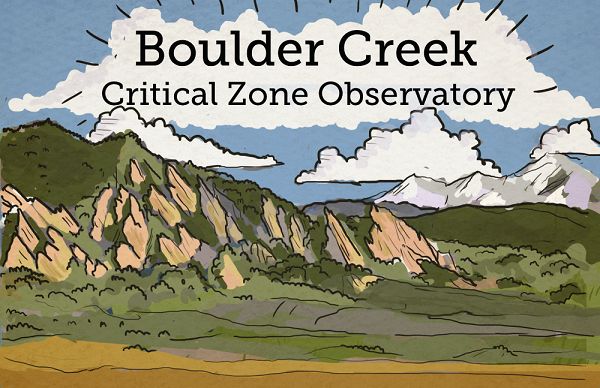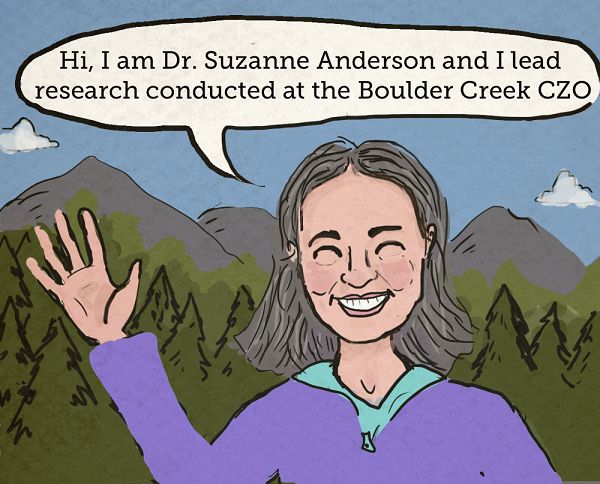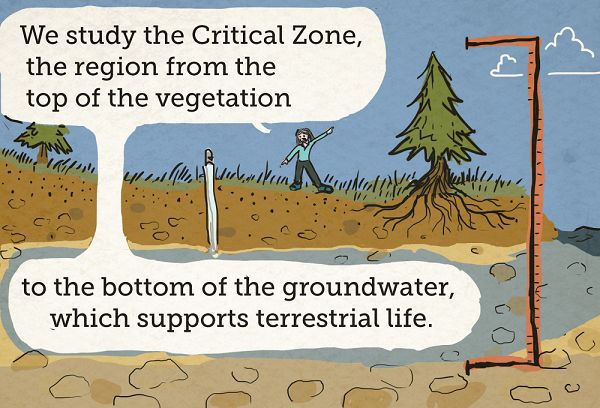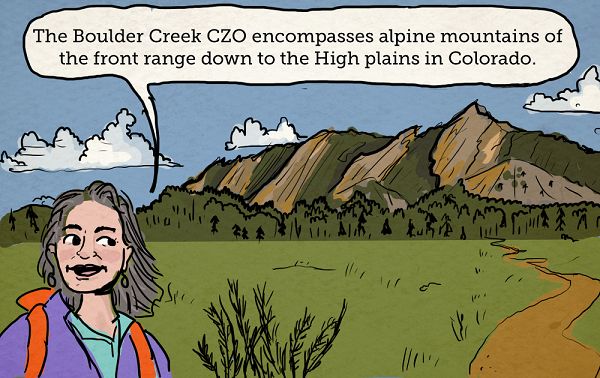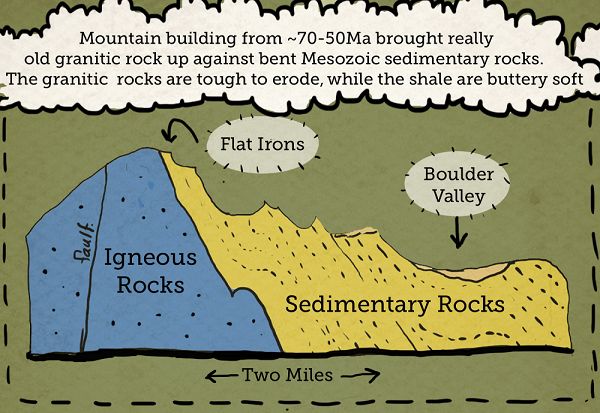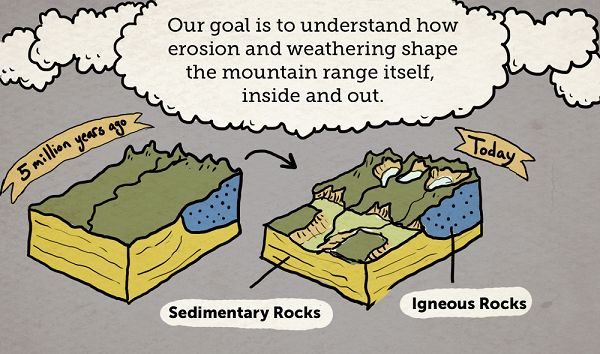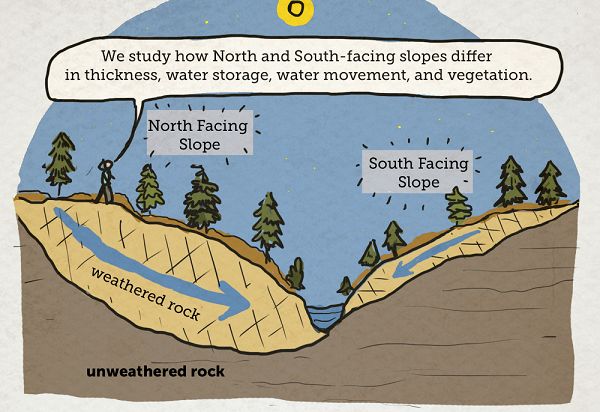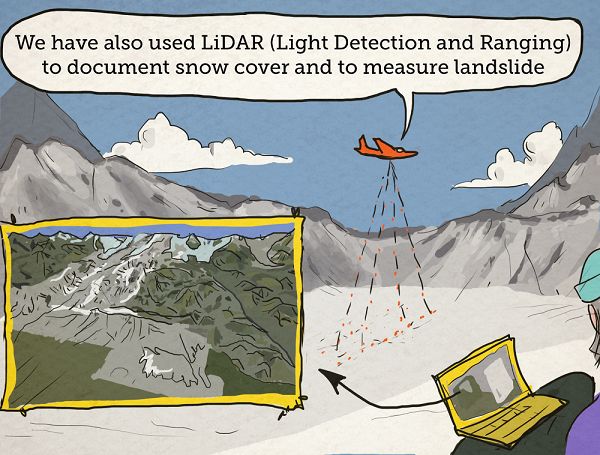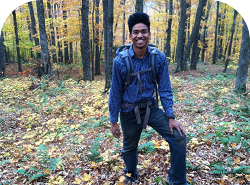Dec 07, 2016
An illustrated introduction to the Boulder Creek Critical Zone Observatory!
By Dr. Justin Richardson and Dr. Suzanne Anderson.
Illustrated by Alana McGillis.
Panel 1. A view of the mountain landscape of the Boulder Creek Critical Zone Observatory (BCCZO).
Panel 2. Dr. Suzanne Anderson waves and says, “Hi, I am Dr. Suzanne Anderson and I lead research conducted at the BCCZO.”
Panel 3. Cross-section view of the CZ, the region from the top of vegetation to the bottom of the groundwater that supports terrestrial life.
Panel 4. Dr. Anderson stands in a flat, grassy valley of Colorado’s high plains with alpine mountains seen distantly in the background known as the front range.
Panel 5. Mountain building 50-70 million years ago brought old granitic rock up against bent Mesozoic sedimentary rocks. Hard-to-erode igneous rocks make up the mountains, whereas the softer shale rocks can be found in the valley. Where these two rocks meet is known as the Flat Irons rock formation.
Panel 6. The unweathered, relatively flat Colorado landscape from 5 million years ago is vastly different from the highly eroded, mountain and valley landscape that exists today. A goal of the BCCZO is to understand how erosion and weather shape the mountain range.
Panel 7. A cross-section of north- and south-facing slopes shows differences in thickness, water storage, water movement and vegetation studied by the BCCZO.
Panel 8. A rush of water picks up and carries sediment downstream while burning vegetation releases carbon dioxide (CO2). The CZO also examine erosion and nutrient movements due to flooding and wildfires.
Panel 9. A plane using LiDAR (Light Detection and Ranging) scans the landscape. Researchers use LiDAR to document snow cover and to measure landslide.
anel 10. Standing on a snowy slope, Dr. Anderson explains, “Understanding CZ evolution is important for predicting our environment in the future.”
Files
What is the Boulder Creek CZO?
(1 MB pdf)
Printable 2-page version of this comic.

Justin B. Richardson
CZO INVESTIGATOR, STAFF. National Office outreach officer, Former CZO Post-Doctoral Fellow. Specialty: Soil biogeochemistry of plant-essential and toxic metals.
Outreach / Education Research EDUCATION/OUTREACH General Public K-12 Education
COMMENT ON "Adventures in the Critical Zone"
All comments are moderated. If you want to comment without logging in, select either the "Start/Join the discussion" box or a "Reply" link, then "Name", and finally, "I'd rather post as a guest" checkbox.
ABOUT THIS BLOG
Justin Richardson and his guests answer questions about the Critical Zone, synthesize CZ research, and meet folks working at the CZ observatories
General Disclaimer: Any opinions, findings, conclusions or recommendations presented in the above blog post are only those of the blog author and do not necessarily reflect the views of the U.S. CZO National Program or the National Science Foundation. For official information about NSF, visit www.nsf.gov.
Explore Further

